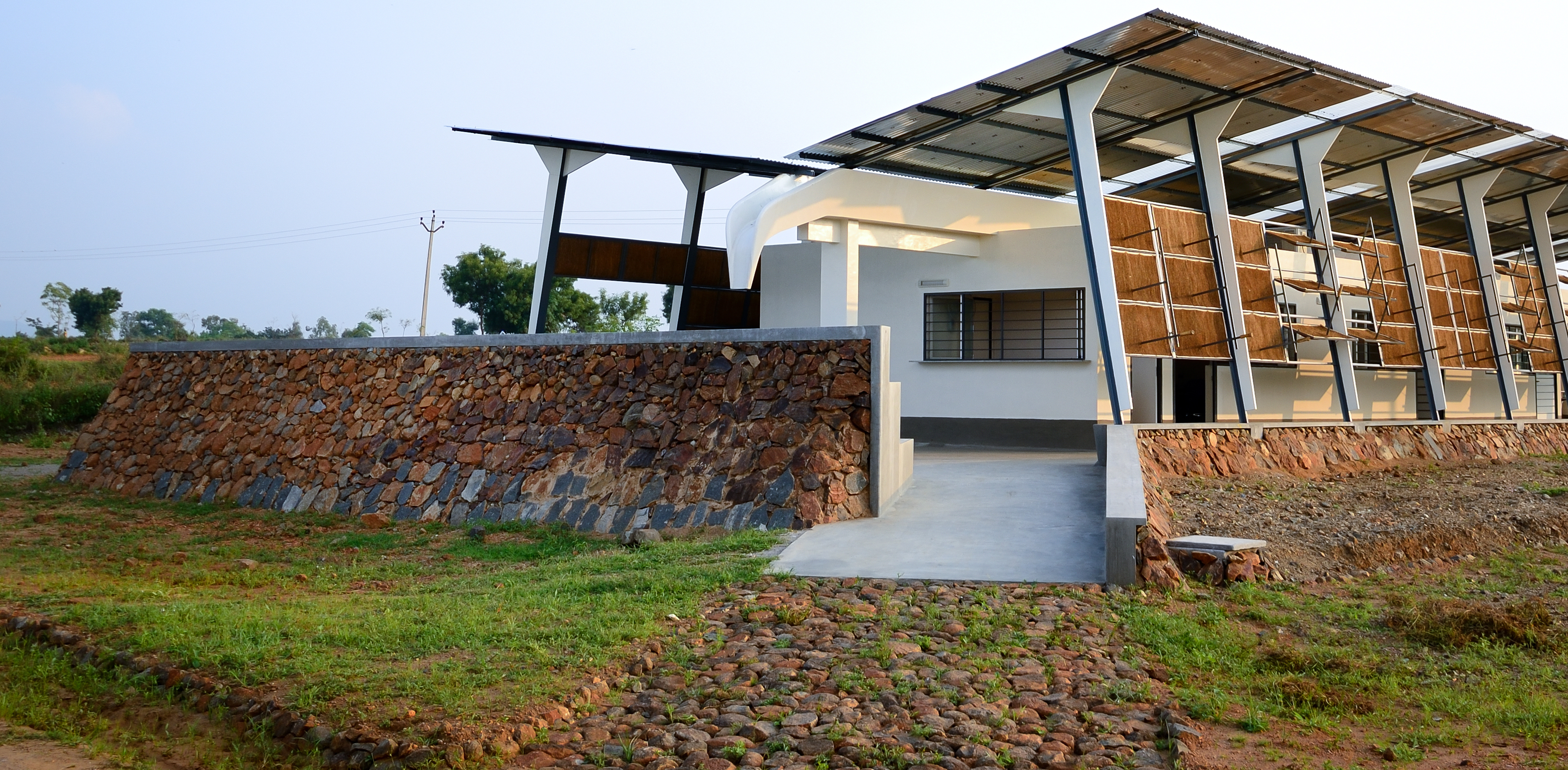The latest edition of “Architizer: The World’s Best Architecture” — a stunning, hardbound book celebrating the most inspiring contemporary architecture from around the globe — is now shipping! Secure your copy today.
We’ve previously explored a variety of innovative stadia and a number of structures with tensile façades; now we look at the intersection of these two themes. Because lightweight, affordable elements can easily span large distances, tensile structures — which carry only tension throughout the various elements without bending or compression — are particularly suited to sports venues.
The following seven projects showcase both speculative and built stadiums of a variety of scales that put tensile ideas to the test, showing how these flexible systems can adapt, expand and change over time. Although they are conspicuously similar in their appearance, the following projects each find their own tensile expression through material, formal or structural experimentation.

© LUC BOEGLY

© Luc Boegly Photographe
Vélodrome Stadium by SCAU architects, Marseille, France
Tensile roof manufactured by Taiyo
This unique stadium was created via a reconstruction of the Stade Vélodrome in Marseille. The power of the design lies in the undulating cover. The translucent skin is stretched across the underlying structure, allowing access, views and protection from the weather.

© Marcus Bredt

© Fernandes Arquitetos Associados

© Erica Ramalho
Stadium Maracanã by Fernandes Arquitetos Associados, Rio de Janeiro, Brazil
Housing the 2014 FIFA World Cup, Stadium Maracanã was modernized in recent years, with careful attention paid to its cultural value. Combining one compression ring and three tension rings, the roof was designed to lightly float above the stadium bowl. A fiberglass membrane covers the entire roof with rebuilt stands below.

© Marcus Bredt

© Marcus Bredt
Brasília National Stadium by Schlaich Bergermann Und Partner, Brasília, Brazil
Also created for the 2014 FIFA World Cup, Brasília National Stadium is the largest building in the city. It includes a rainwater collection system with a double-layer roof structure that is retractable. It follows a balanced suspension wheel principle as a design basis.

© Marcus Bredt

© Marcus Bredt
Arena da Amazônia by Schlaich Bergermann Und Partner, Manaus, Brazil
Another stadium in Brazil, the Arena da Amazônia creates a unique façade and method for transferring structural loads. Both a compression ring and tension ring are part of a structure supported by spherical bearings. The design creates a cohesive roof and façade that opens up in the stadium bowl as it meets the ground level.

© Wilmotte & Associés SAS

© Wilmotte & Associés SAS
Allianz Riviera Stadium by Wilmotte and Associés SA, Nice, France
The Allianz Riviera Stadium was created as a multipurpose eco-stadium. It is designed with an ETFE tensile fabric covered over a wood-steel frame. The concept was transparency, with the hope of eliminating the clear boundary between inside and outside. The membrane was conceptualized to float above the spectators below.

© LAVA - Laboratory for Visionary Architecture

© LAVA - Laboratory for Visionary Architecture
Addis Ababa National Stadium and Sports Village by LAVA, Addis Ababa, Ethiopia
A speculative design and master plan never fully realized by LAVA (Laboratory for Visionary Architecture), the Addis Ababa National Stadium proposal combines a 60,000-seat olympic stadium, dormitories, pitches, halls, and commercial zones. An intelligent membrane and lightweight tensile structure covers the main stadium and landscape. The design plays off of tectonics and the volcanic geology of the region.

© Bahadır Kul Architects

© Bahadır Kul Architects

© Bahadır Kul Architects
Mersin Stadium by Bahadır Kul Architects, Icel, Turkey
The Mersin Stadium was created to accommodate a variety of uses but primarily operates as a soccer field. It is designed as a tensile elliptical shell over the bowl below. The material of the shell doubles to suit the climate of Mersin while allowing shifting views through its translucent skin during the different hours of the day.
The latest edition of “Architizer: The World’s Best Architecture” — a stunning, hardbound book celebrating the most inspiring contemporary architecture from around the globe — is now shipping! Secure your copy today.

 Addis Ababa National Stadium & Sports Village
Addis Ababa National Stadium & Sports Village  Allianz Riviera Stadium
Allianz Riviera Stadium  Arena da Amazônia
Arena da Amazônia  Brasília National Stadium
Brasília National Stadium  Mersin Stadium
Mersin Stadium  Stadium Maracanã (Estádio Jornalista Mário Filho)
Stadium Maracanã (Estádio Jornalista Mário Filho)  Vélodrome Stadium
Vélodrome Stadium 


